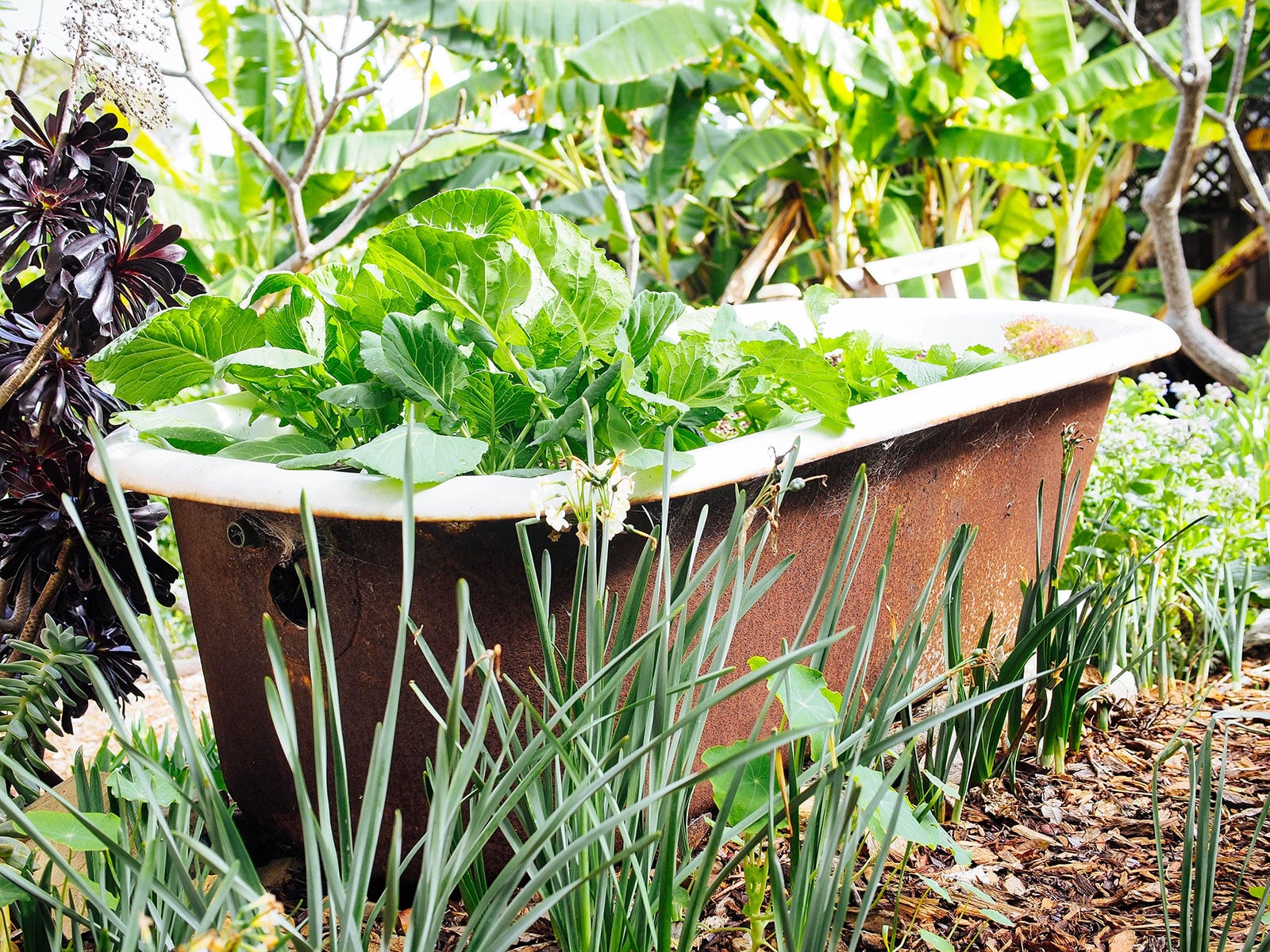How I Turned a Vintage Clawfoot Bathtub Into a Planter – Garden Betty
I’ve fielded many questions about the clawfoot tub from my popular post on making a no-dig garden, so I thought I would share the process of how I repurposed mine into an outdoor planter—though there wasn’t much to it.

The vintage cast-iron bathtub was already in the yard when I moved into my house. It was propped up on a pile of stones (between 6 to 12 inches high, as the land was sloped underneath it) under the partial shade of a mature feijoa tree, and as you can see in these images, it sits slightly askew to promote drainage through the original drain hole.



Unless you knew about the tilt, you’d never notice it just walking by the tub in real life.

What about drainage?
This bathtub planter lived in my old garden in Southern California. In a climate like that, which received little annual rainfall, drainage wasn’t a major concern. (Though the tub did go through several storms over the years, bringing a few inches of rain each time, and the tub held up well with no waterlogging thanks to good soil—more on that below.)
If you live in a very rainy climate, it might be a wise idea to drill a few more holes in the bottom to help with root aeration.
I don’t recommend adding stones, styrofoam, pot shards, or any of the other fillers people often turn to for pot drainage.
This is a long-standing gardening myth that refuses to die, despite simple physics proving that so-called drainage materials do the complete opposite of what they’re intended.
Why?
Because water does not move easily from finer textured material (soil) to coarser textured material (say, stones). As the water trickles through the soil and reaches the stones, it will stop and start to pool in between the layers (in effect, “back filling” the pot) until the soil is fully saturated.
Only then will it start to drain—a slow process that keeps the roots sitting in soggy soil far longer than it ordinarily would if the whole pot were filled with soil. Rather than assisting with drainage, the stones restrict it.
The only way to ensure proper drainage is to fill your pot (or in this case, your bathtub) with well draining potting soil (not garden soil, which is much too dense) and make sure the drain hole is unobstructed.
When you water, stick your finger in the soil and water only if the first couple inches feel dry. (Moderate watering also encourages the plant roots to reach deep into the soil and grow stronger, rather than staying near the surface where they tend to be weaker.)

The best type of soil for a bathtub planter
Think of a bathtub planter as a giant container or raised bed. It needs loose, well-draining soil, ideally something you make (such as a no-dig garden or a lasagna garden), or something you buy.
Bagged soil works well in this instance, as long as it’s labeled for use in containers or raised beds—avoid straight “garden soil” or “top soil,” as those are typically made for mixing into your native dirt and tend to be denser to retain moisture.

If the soil seems too heavy, you can mix in a few buckets of compost or perlite for more aeration.
With a no-dig garden bed like the one I built for the bathtub, the layers decomposed into soft, aerated soil so compaction was never an issue. When I topped off the bed each season, I simply used well rotted compost, potting soil, raised bed soil (which is essentially a potting soil), or a mix.
In the fall, you can also plant fava beans or another cover crop (like Austrian winter peas) in the clawfoot tub and “chop and drop” at the end of the season, just as you would for a normal garden bed.

Bonus: it’s the perfect height for harvesting
One of the things I loved most about the bathtub planter (besides its quirky aesthetic) was not having to stoop or kneel to harvest.
On its perch of stones, the tub came up just below my hips, putting all the plants at perfect picking height.

I could also spray compost tea onto the undersides of the leaves while standing and inspect the plants more easily for pests—small benefits that my back and knees end up thanking me for (and one of my main lazy gardening principles).
Have any other questions about my clawfoot tub-turned-planter? Let me know in the comments!
View the Web Story on how to turn a clawfoot bathtub into a planter.
This post updated from an article that originally appeared on March 13, 2014.






